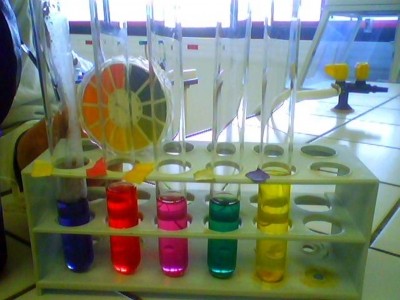Battle for brain cancer drug delivery continues
system to treat brain cancer that it claims could revolutionise
currently used chemotherapeutic treatments for this devastating
type of cancer.
Researchers at the University of Michigan Comprehensive Cancer Centre have designed tiny nanoparticules loaded with high concentration of drugs to target and kill brain cancer cells.
Approximately 17,000 people in the United States are diagnosed with primary brain cancer each year and nearly 13,000 die of the disease.
However, treating these patients is generally a challenge as the blood-brain barrier (BBB) blocks most therapeutics drugs from entering the brain, making it difficult to treat brain tumours.
The researchers used a drug called photofrin along with iron oxide integrated into nanoparticules - measuring just one hundred thousandth of a millimetre - to target cancerous cells in the brain, by-passing the BBB.
"The problem with free photofrin therapy is that it can cause damage to healthy tissue," said study author Brian Ross, professor of radiology at the U-M Medical School and co-director of Molecular Imaging at the U-M Comprehensive Cancer Center.
"In our study, the nanoparticle becomes a vehicle to deliver the drug directly to the tumour."
Photofrin is a type of photodynamic therapy in which the drug is drawn through the blood stream to tumour cells while a special type of laser light activates the drug to attack the tumour, and the iron oxide is used as a contrast agent to enhance magnetic resonance imaging (MRI).
Photofrin has been used to treat several types of cancer, including oesophageal, bladder and skin cancers. It works by travelling through blood vessels until it reaches the vessels supplying blood to the tumour. When activated by light, the Photofrin collapses these blood vessels, starving the tumour of the blood it needs to survive.
"Thinking outside the box is a must for developing brain cancer treatments. Drugs don't get into the brain when delivered in the normal way, which explains in part why some current treatments for brain tumors are generally not effective," said study author Alnawaz Rehemtulla, professor of radiology and radiation oncology at the U-M Medical School.
"Targeting the tumour vasculature with nanoparticles containing a payload will overcome these issues."
What is more, these nanoparticules can be used to image and track tumours as well as destroy them, according to the research team.
The advantage of this delivery system is the ability to attack the tumour with higher doses of a drug while sparing normal tissue from a drug's toxic side effects.
"Our research suggests that you can take a drug that may be toxic to normal tissue - it could be any type of drug, not just photodynamic - and you could deliver higher doses of that drug for a more powerful punch," said Rehemtulla.
But Rehemtulla's team is not the only player in the race for new delivery systems to the brain. The difficulty of reaching cancerous cells in the brain has been spurring researchers to find new methods of breaching the blood-brain barrier without damaging it.
Last month, Perfusion Technology, a start-up company, gave new hope for patients with brain tumour by developing a new medical device that it claims is the first ultrasound-based system to allow drug delivery to the brain.
Pre-clinical trials showed that the new device could safely open the BBB to enable the delivery of therapeutic drugs directly into the brain, using a low-intensity ultrasound technology.
Results of the University of Michigan's study appeared in Clinical Cancer Research on 15 November.














